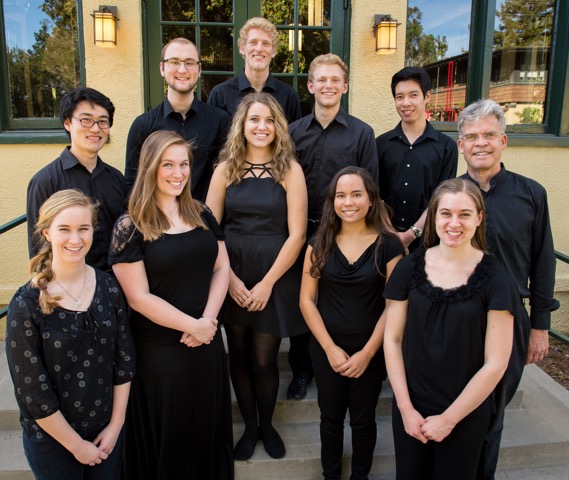Santa Barbara Music Club Turns 50
Free Classical Concerts, Scholarships, and Community

Before the advent of the modern concert setting, with its tuxedoed musicians, season subscriptions, and reserved seats, classical music often took place at private gatherings in people’s homes. Many of these musical get-togethers were rather grand — patrons such as Prince Nikolaus Esterházy (who supported Joseph Haydn), Frederick the Great of Prussia (a composer himself and a fan of J.S. Bach), and Hieronymus Count von Colloredo, archbishop of Salzburg (who left W.A. Mozart feeling underappreciated) come to mind. But they don’t have to be.
The Santa Barbara Music Club, which is celebrating its 50th anniversary this season, began, according to its current president, Eric Valinsky, as “people playing for each other in living rooms,” and providing what he characterized as a “mutually supportive” environment. Today, the organization produces an average of approximately 15 concerts per year, always on Saturday afternoons at 3 p.m., some at the First United Methodist Church of Santa Barbara, and others at the main branch of the Santa Barbara Public Library in the Faulkner Gallery. All of the concerts are free, and most of them run a little over one hour in length. In addition, the organization administers a wide-ranging and generous scholarship program that supports young musicians living in Santa Barbara county; 30 recipients were named in 2019, with their ages ranging from 10 to 20 years old.
Like the great salons of music history, the Santa Barbara Music Club mixes professionals and talented amateurs in its ensembles and owes its existence to the efforts of musically inclined patrons and their preferred performers and composers. The club attained its modern formation thanks to a collaboration between Emil Torick and Betty Oberacker. Oberacker is a distinguished pianist and UCSB professor of music emeritus who is still on the club’s board. Torick was an amateur violinist and organist, and a leading sound engineer with CBS Labs. His inventions led to multiple patents for him and an era of increased fidelity on the airwaves of America as he developed a variety of devices for improving the sound of both AM and FM broadcasts. When he moved to Santa Barbara from Connecticut in 1997, he found Oberacker, and together they shaped the Santa Barbara Music Club into the resource that it is today. Without Torick’s generosity, many young musicians in this city might never have had the lessons or the instruments that gave them their starts.
Eric Valinsky continues in Torick’s tradition by performing (he’s on the December 7 bill playing piano with Adelle Rodkey on Poulenc’s Sonata for Piano and Oboe) while pursuing a successful career in technology. Valinsky holds a DMA in composition from Columbia University. Other upcoming concerts include one this Saturday, November 23, also at the First United Methodist Church, featuring works by Schumann, Schubert, Beethoven, and Mendelssohn. Remarkably, all this takes place without funding from major grantmaking organizations. The Santa Barbara Music Club gets by instead on the income from an endowment made possible by Emil Torick and others, and on the donations of individuals. This brings us back to where we started, in the mutually supportive atmosphere of a private home. As a club, this organization seeks to increase membership, rather than to sell tickets. Valinsky touts this as part of an ethos that is “hands-on” and “noncompetitive.” The group aims to be that way both in the concerts it organizes and the scholarships it administers. Their goals are to bring music and music education to the citizens of Santa Barbara in the most direct way possible, free and open to the public. For more information, and to learn how you can attend one of these programs, go to sbmusicclub.org.



